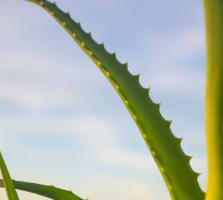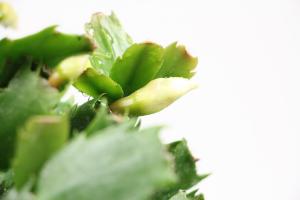Introduction
Salt water plants are specialized organisms that are adapted to living in saline environments. They are able to tolerate high levels of salt in the water and have evolved unique mechanisms to cope with the osmotic stress caused by salt concentration. In this article, we will explore how salt water plants react to NaCl and how their physiology is affected by changes in salinity levels.
The effect of NaCl on plant growth
Exposure to high levels of NaCl can have a detrimental effect on plant growth. This is because the high salt concentration causes an increase in osmotic pressure, which draws water out of the plant cells and leads to dehydration. In addition, NaCl can interfere with the absorption of essential nutrients, such as potassium and calcium, which are necessary for plant growth.
Osmotic adjustment in salt water plants
Salt water plants have evolved unique mechanisms to cope with high salt concentrations. One of the key strategies is osmotic adjustment, which involves the accumulation of compatible solutes such as proline, glycine betaine, and potassium ions. These compounds help to reduce the osmotic pressure within the plant cells and maintain cell turgor, even in the presence of high salt concentrations.
The role of ion transporters in salt tolerance
Ion transporters play a critical role in salt tolerance in plants. These proteins are responsible for transporting ions across the plant cell membrane, and they can selectively exclude Na+ ions in favor of other essential ions, such as K+. In addition, ion transporters can facilitate the movement of ions within the plant, which helps to maintain ion homeostasis and prevent toxicity.
The effect of salinity on photosynthesis
Salinity can have a significant impact on photosynthesis in salt water plants. Studies have shown that high salt concentrations can lead to a reduction in photosynthetic activity, primarily due to a decrease in chlorophyll levels and damage to photosystem II. In addition, salt stress can lead to oxidative damage and inhibit carbon fixation, which can affect the overall productivity and growth of the plants.
Conclusion
In conclusion, salt water plants have evolved unique mechanisms to cope with high salt concentrations, which include osmotic adjustment, ion transport, and other physiological adaptations. However, exposure to NaCl can still have a significant impact on plant growth and photosynthesis, and it is important for researchers to continue exploring the underlying mechanisms of salt tolerance in these specialized organisms.

 how many times do yo...
how many times do yo... how many planted tre...
how many planted tre... how many pine trees ...
how many pine trees ... how many pecan trees...
how many pecan trees... how many plants comp...
how many plants comp... how many plants can ...
how many plants can ... how many plants and ...
how many plants and ... how many pepper plan...
how many pepper plan...
































